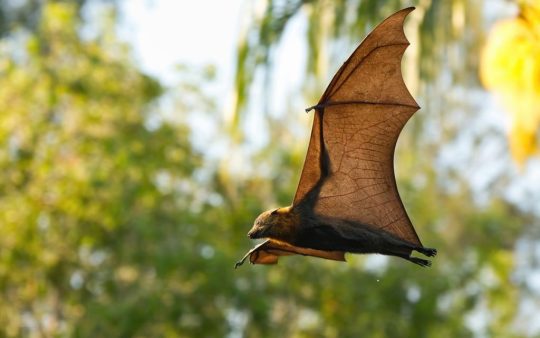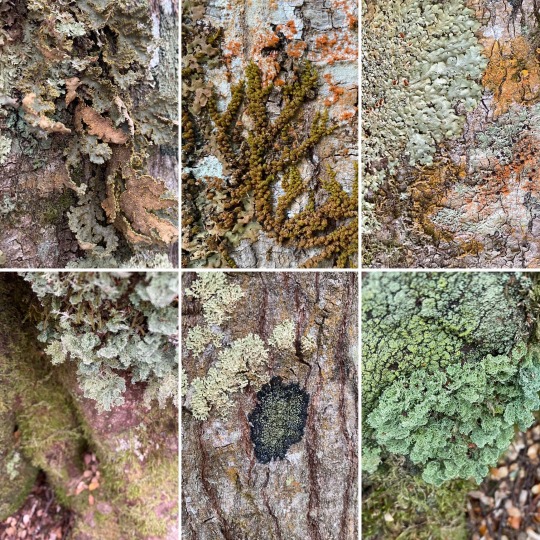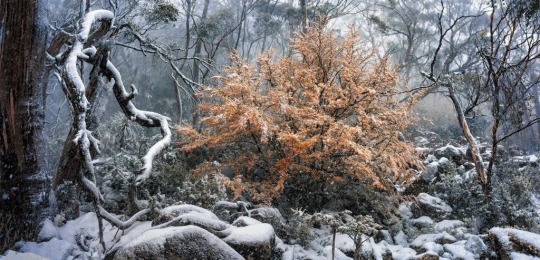#deciduous forest
Explore tagged Tumblr posts
Text








Грибы на трухлявых пнях и стволах деревьев - Навозник мерцающий (лат. Coprinellus micaceus), Трутовик окаймлённый (Fomitopsis pinicola), Грифола курчавая (лат. Grifola frondosa), Ежовик коралловидный (лат. Herícium coralloídes), Лиственная губка или Трутовик настоящий (Fomes fomentarius) и Ло��ные опята. Октябрь 24.
Mushrooms on rotten stumps and tree trunks -. Coprinellus micaceus, Bordered tinder fungus (Fomitopsis pinicola), Grifola frondosa, Coral-shaped hedgehog (Lat. Hericium coralloídes), True tinder fungus (Fomes fomentarius ) and False honey mushrooms. October 24.
#Россия#русский tumblr#природа#осень#лиственный лес#цветная листва#пень#мох#Микология#грибы#макрофото#мои фото#Russia#autumn#nature#nature photography#deciduous forest#stump#moss#mushrooms#fungus#mycology#colored foliage#my photos#original photography#macro photography#photographers on tumblr
244 notes
·
View notes
Photo

Unterholz von Claude Monet (1876, Gemälde)
#kunst#kunstwerk#art#artwork#claude monet#künstler#artist#monet#landschaft#landscape#natur#nature#draußen#outdoors#wald#forest#bäume#trees#leaves#blätter#pflanzen#plants#unterholz#laub#laubwald#deciduous forest#grün#green#farben#colors
18 notes
·
View notes
Text

Nature: Biomes - Temperate Deciduous Forest
And into the forest I go to lose my mind and find my soul.
#deciduous#Deciduous Forest#temperate forest#forest#nature#landscapes#aesthetic#moodboard#nature aesthetic#nature moodboard#landscape aesthetic#Landscape moodboard#natural world#natural aesthetic#landscape and nature#Biomes#Forest Biomes#Temperate Deciduous Forest#john muir#forests#woods#walk in the woods#forest aesthetic#forest moodboard
41 notes
·
View notes
Text






the only place i feel at home
6 notes
·
View notes
Video
Vivid Autumn colors in the valley below Piney Field Top Mountain in Haywood County, North Carolina Aerial View by David Oppenheimer Via Flickr: Vivid autumn colors in the valley below Piney Field Top Mountain in Haywood County, North Carolina taken on October 14, 2022 aerial view - © 2023 David Oppenheimer - Performance Impressions aerial photography archives - performanceimpressions.com
#Piney Field Top#Pisgah Creek#Frying Pan Mountain#Fork Mountain#Blue Ridge Parkway#autumn#fall#fall colors#autumn colors#foliage#peak color#trees#nature#forest#deciduous forest#vibrant#colorful#woodland#seasonal#mountains#ridge#ridgeline#aerial#aerial view#aerial photograph#aerial photography#Canton#Haywood County#Blue Ridge Mountains#Blue Ridge
0 notes
Text

colorful beech forest in autumn. primeval woods of transcarpathia on a sunny day. beautiful nature background
#forest#autumn#nature#tree#beauty#environment#europe#beautiful#natural#day#season#weather#foliage#woodland#ecosystem#woods#deciduous#beech#outdoor#carpathian#scenery#bright#calm#lush#primeval#scenic#sunny#tall#background#colorful
191 notes
·
View notes
Text



Get Foxy with the Grey-headed Flying Fox
Pteropus poliocephalus, better known as grey-headed flying foxes, are a species of megabat native to eastern Australia. They are typically found in rainforests, woodlands, and swamps, but they have also become common in more agricultural and urban areas, particularly those that maintain large groves of trees. They are semi-migratory, moving when food availability diminishes, and can travel over 1000 km (620 mi) over the course of a season.
Like most bats, grey-headed flying foxes forage at night. They feed exclusively on fruit, pollen, nectar, and tree bark-- most commonly from figs and two species of eucalyptus tree-- and may fly up to 50 km (31 mi) in a single night to find food. Although they are quite large, P. poliocephalus can fall prey to eagles, goannas and snakes, particularly as pups or juveniles.
Because they do not feed on insects, these bats do not use echolocation to navigate. Instead, they use a large range of calls to communicate with other members of their colony, which can contain several hundred members in the summer. Winter colonies are slightly smaller, and segregated by sex, but individuals and families within these groups will stay together for several generations.
Mating occurs between March and May, when males stake out territories and compete to attract females. After mating, mothers seclude themselves in a female-only colony and gestate a singe pup about 6 months after breeding. Weaning takes an additional 5-6 months, after which juveniles separate from their mother. Daughters typically stay within their mother's winter colony, while sons join the male colony after a year's time. Individuals take approximately 30 months to become fully mature, and may live up to 10 years in the wild.
The grey-headed flying fox is notable for being the largest of Australia's bat species. Adults can be anywhere from 600-1000 g (21.5- 35.2 oz), with a wingspan of up to 1 m (3.3 ft). As their name implies, the body is covered with burnt orange fur, and the face is large and fox-like, with none of the large ears or distinct nasal apparatuses that distinguish other bat species.
Conservation status: P. poliocephalus is considered Vulnerable by the IUCN. Populations are declining largely due to habitat destruction. Many individuals are also killed by farmers, who consider them to be pests.
Photos
Vivien Jones
Shane Ruming
Andrew Mercer
#grey-headed flying fox#Chiroptera#Pteropodidae#fruit bats#flying foxes#bats#mammals#tropical forests#tropical forest mammals#tropical rainforests#tropical rainforest mammals#deciduous forests#deciduous forest mammals#urban fauna#urban mammals#oceania#australia#east australia#biology#zoology#ecology#animal facts
82 notes
·
View notes
Text

#Edensor#Derbyshire#Chatsworth Estate#English countryside#English villages#woodland#parish church#deciduous#forest#scenic view#picturesque#landscape#rural britain#footpath
43 notes
·
View notes
Text

Forest textures 🪵🍃
#deciduous forests#mountain forest#forest fairy#forest photography#forest floor#forest#trees#moss#mosscore#forestcore#wild photography#original photography#middle earth#cottagecore#cottage vibes#mine#plantblr#lichen#woodland#woods#wild places#lord of the rings#lotr aesthetic#nature photography#catholic#slow living#photography
64 notes
·
View notes
Text
ever since I was a little girl I wanted to go somewhere empty and cold and desolate
#augh iceland.....#yes I know it's got many birds and foxes and seals and wildlife and flowers#but compared to a temperate deciduous forest I'm used to or the more popular vacation destinations among my peers. its very different#leave the caribbean ALONE.....#the only reason I'd go back is for like. a long weekend of birding. costa rica is supposed to be incredible#but I've only been for educational trips and it's so sad how ppl treat these countries like sandboxes for rich americans#cor.txt
3 notes
·
View notes
Text





Дождевик грушевидный (лат. Lycopérdon pyrifórme) и Дождевик коричневый, или Дождевик умбровый (лат. Lycoperdon umbrinum). Октябрь 24.
Wolf-fart Puffball, Stump Puffball (Lycoperdon pyriforme) and Lycoperdon umbrinum, commonly known as the umber-brown puffball. October 24.
#Россия#русский tumblr#природа#осень#лиственный лес#цветная листва#пень#мох#Микология#грибы#макрофото#мои фото#Russia#autumn#nature#nature photography#deciduous forest#stump#moss#mushrooms#fungus#mycology#colored foliage#my photos#original photography#macro photography#photographers on tumblr
190 notes
·
View notes
Text
So we've been having some desperately-needed rain today, but it's been flirting with severe. I was talking to a coworker about summer vs winter. I am 100% a child of winter. I was born there, I'm cold-resistant, I love days that are only ten hours long.
Anywho, right as I said "I LOATHE summer" lightning struck and shook the entire store, spooking the coworker, who jumped.
I looked up and said "Thanks for the emphasis, but it wasn't necessary!"
#storms#good timing#thunder gods agreed with me#didn't mean to spook the kid#i really don't like summer though#it's too hot#it's too bright#the days are way too long#and the mosquitoes will literally carry you away#living in a deciduous rain forest here#i should move to nova scotia or something#thermonuclear death orb#old man rambling#rambling#stories
4 notes
·
View notes
Video
Golden Days by Katsuaki Shoda Via Flickr: Canon EOS R6m2 + RF24-105mm F4L IS USM
#Kato#Hyogo#Japan#Leaf#Tree#Nature#No People#Autumn#Scenics - Nature#Cypress Tree#Beauty In Nature#Season#Plant#Environment#Beauty#Lush Foliage#Backgrounds#Branch - Plant Part#Sunny#Forest#Bright#Deciduous Tree#Close-up#Autumn Leaf Color#Sunlight#flickr
5 notes
·
View notes
Text

“Aurum”, lutruwita/Tasmania, 2019
Fagus, Tanglefoot, Deciduous Beech (Nothofagus gunnii, (Hook.f.) Oerst) is a tree of many names, but an identifying feature that supersedes them all – it’s Australia’s only cold-weather deciduous species.
Endemic to Tasmania’s alpine country, they are found in just a few small pockets of the island. Every year, tourists come from the world over to experience “the change,” turning from heritage green to flaming oranges for around a week.
Photo © Benjamin Alldridge
#science#nature#photography#australia#mine#tasmania#flora#dendrology#trees#trees and forests#snow#artists on tumblr#Nothofagus#botany#fall#autumn#deciduous#orange leaves#yellow leaves
8 notes
·
View notes
Text
For this week's session we were a man down and those remaining weren't super verbal, so, perfect time for a random encounter en route to the Summer Palace.
Nothing too draining--a pair of shambling mounds, just to shake things up a bit.
Highlight of the session was 100% our paladin doing as much damage (3hp) with her improvised weapon--a chicago roll--as the fighter did with her level 2 Hellish Rebuke dealing fire damage against a PLANT.
#d&d#suncrest#RAW shambling mounds have resistance to fire damage#but RAW that's because they're swamp creatures#this was a deciduous forest so fire resistance was stupid#I compensated with extra hitpoints
32 notes
·
View notes
Text

mountain landscape with fog and clouds. green environment. deciduous woods on the grassy hill. sunny morning in spring. beautiful scenery with valley
#fog#hill#landscape#cloud#woods#outdoor#mountain#morning#grass#spring#sunny#grassy#deciduous#background#mist#green#sky#environment#nature#view#travel#forest#beautiful#scenery#tree#foggy#light#summer#scenic#valley
64 notes
·
View notes
